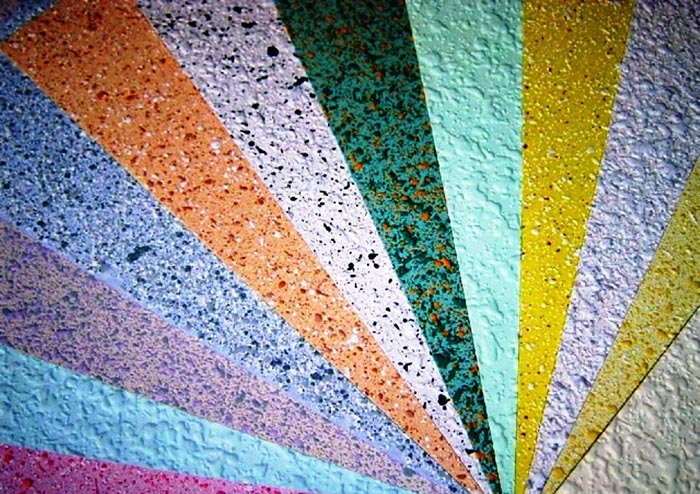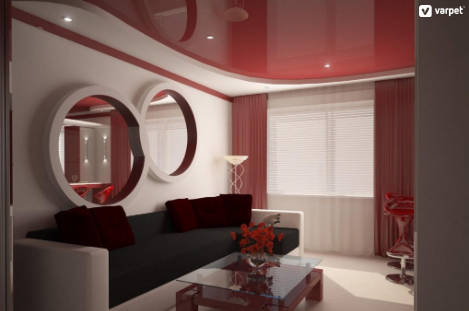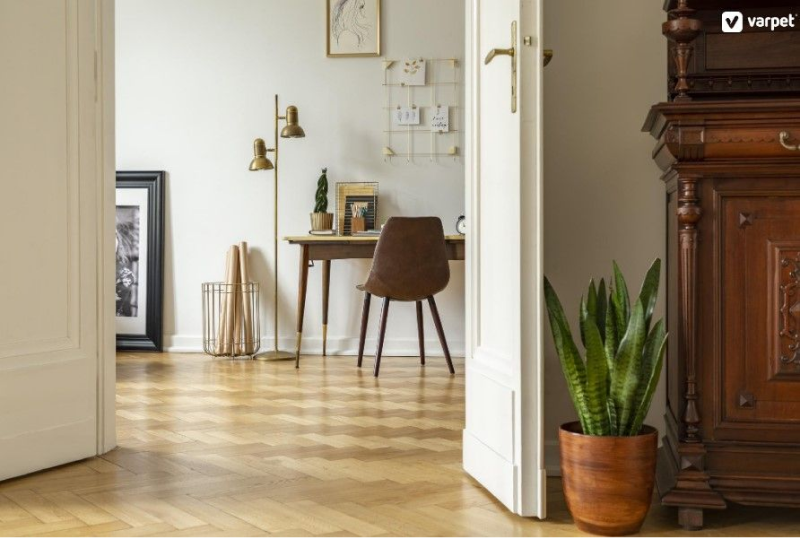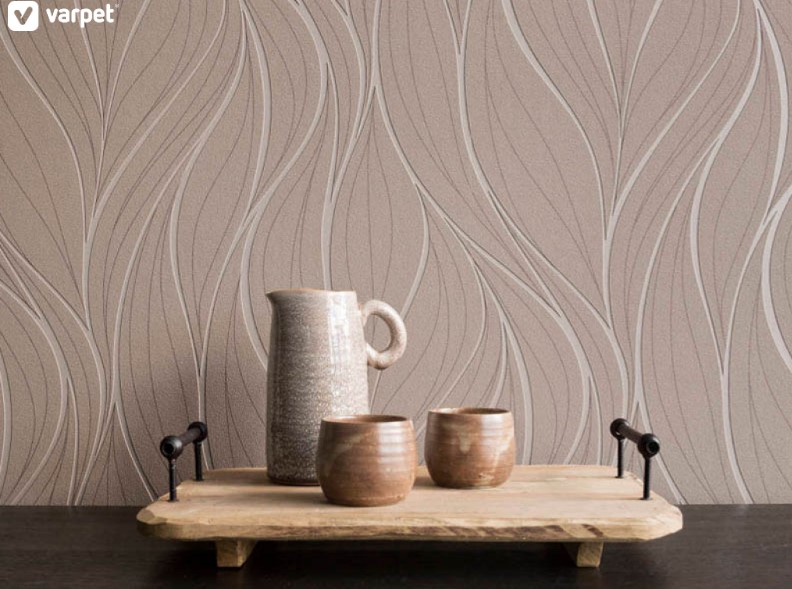Liquid wallpaper has appeared on the market relatively recently, but has already has managed to win its special place among other finishing materials. Although many still prefer classic paper wallpapers to them, mistakenly believing that it is easier to work with. We will examine in more detail what constitutes a finishing coating – liquid wallpaper, how to apply them to a wall and other surfaces. Whether their application is really a complex labor-intensive process that requires special training.
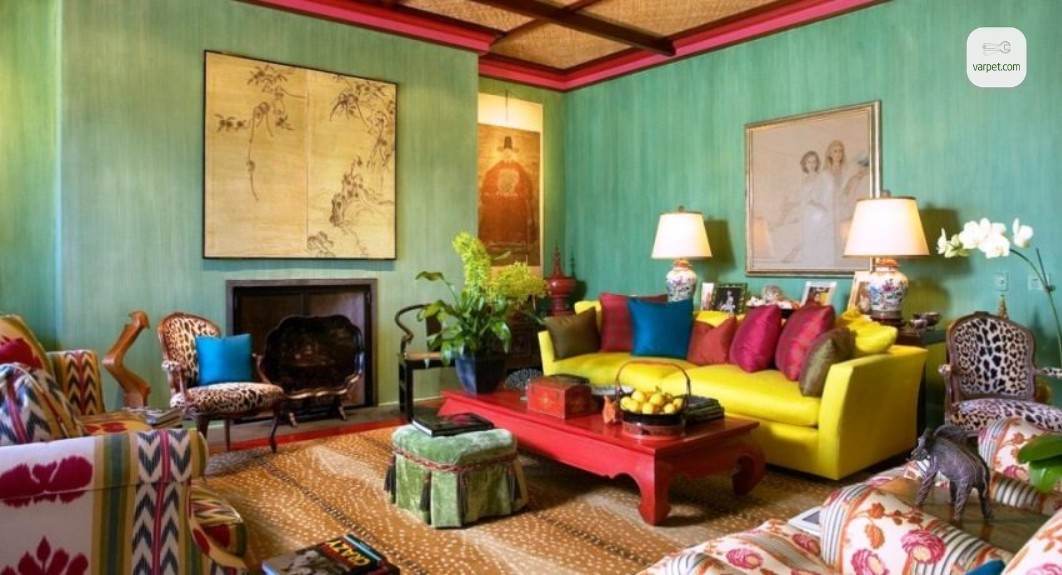
Liquid wallpaper – a modern decoration material for the walls
What is liquid wallpaper
Liquid wallpaper is decorative plaster. On sale, these wallpapers are presented in dry and liquid form, but the first option is more common. The price for packing liquid wallpaper will depend on the manufacturer, the composition of the mixture and the type of filler. When dry, they look like sawdust packaged in packages weighing 1 kg.
The main components of this mixture:
- cellulose as well as cotton fiber;
- dye;
- glue (most often it is KMS glue);
- decorative components (granules, shavings, spangles, threads).
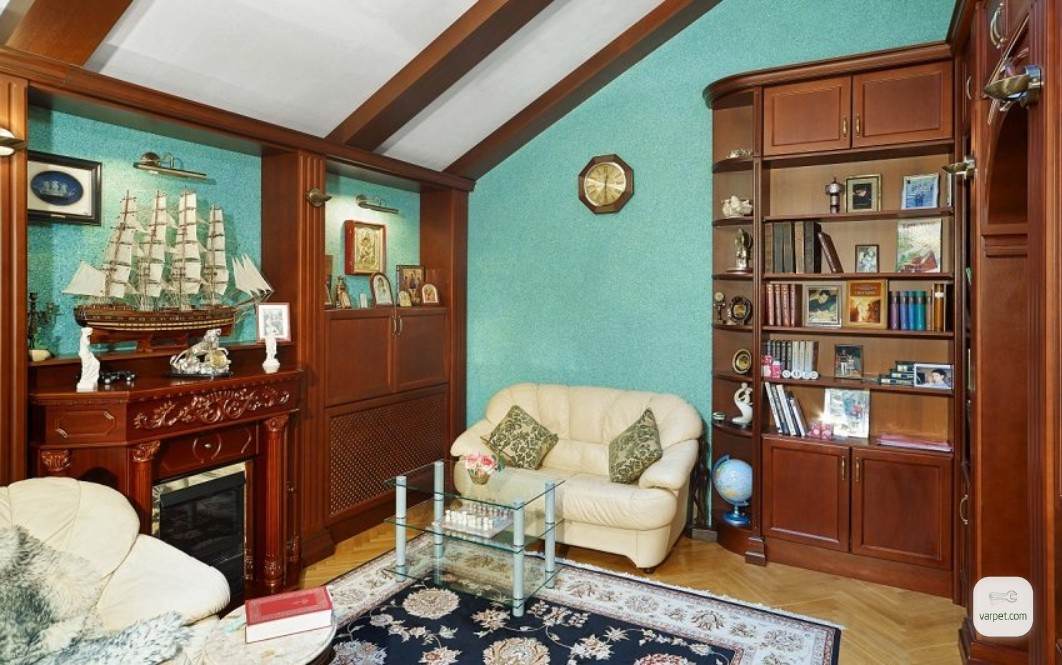
Liquid wallpaper in the interior of the living room
This dry mixture is diluted with ordinary water, and applied to the wall, like other types of finishing plasters, with a trowel or a spatula.
The end result is a beautiful, environmentally friendly decorative coating that is warm and rough to the touch, with excellent heat and noise insulation properties.
Since the composition involves the manufacture of paper, do-it-yourself liquid wallpaper is quite easy. In addition, there are full-fledged manuals and videos: do-it-yourself liquid wallpapers.
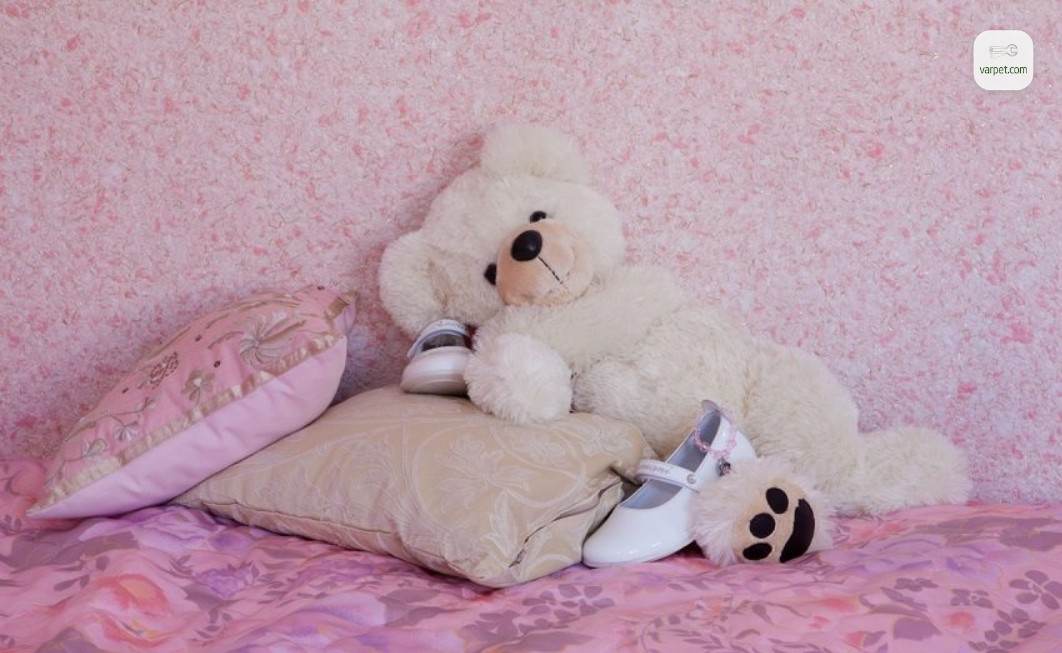
Liquid wallpaper – excellent soundproofing material
What are the advantages of liquid wallpaper
This material has earned positive reviews from consumers around the world due to its characteristic advantages:
- ease and ease of application. To prepare the mixture does not require a lot of space and expensive tools. The application process is so simple that even a layman can handle it;
- universality. Liquid wallpaper is compatible with almost any material: concrete, wood, drywall, fiberboard, MDF, plaster, plywood, paint and even metal. After application, a seamless surface is obtained, so there is no need to worry about joints, fittings, etc. In addition, they are able to hide small irregularities and depressions;
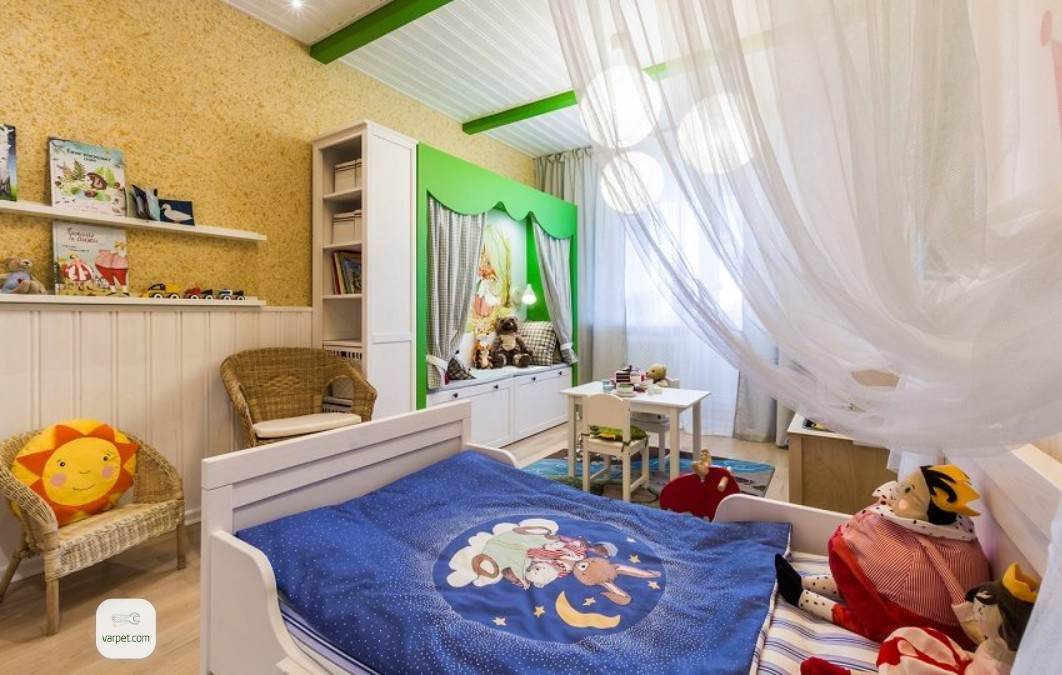
Liquid wallpaper repels dust, is resistant to temperature extremes, does not absorb odors, does not fade, is fireproof and is not subject to deformation
- good household performance. Liquid wallpaper repels dust, is resistant to temperature extremes, does not absorb odors, does not fade, is fireproof and is not subject to deformation;
- aesthetic appeal. This finishing material, due to its structure, allows you to create various variations of decorative solutions. Even professional designers are happy to use liquid wallpaper. Photos of interiors where this coating was successfully used can be found on the Internet;
affordable price. The seller will take 1000-2500 drams per square meter of liquid wallpaper.Advice! If the wall on which the liquid wallpaper is applied is dirty, then there is no need to completely update the coating. It is enough to moisten the desired area with water, remove with a spatula and fill this area again with the diluted mixture.
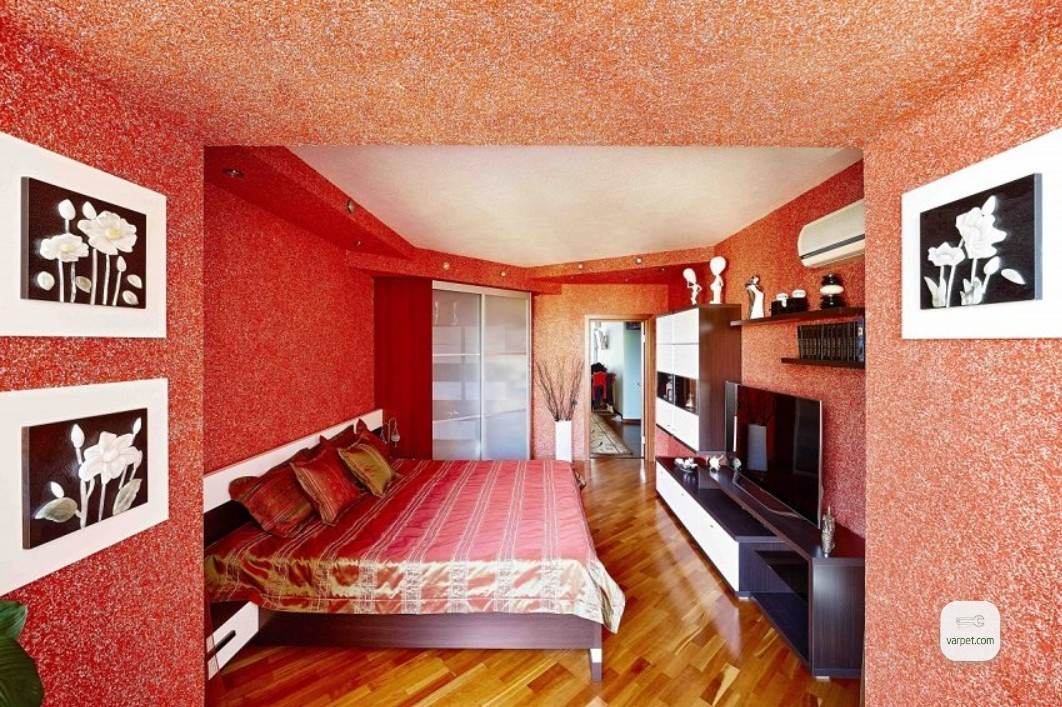
Bright red liquid wallpaper in the interior of the room
Liquid wallpaper: application technology. Features, tricks, useful tips
Understanding which walls you can apply liquid wallpaper to is easy – if you study the composition well again. The presence of an adhesive component allows you to apply this type of wallpaper to almost any surface. We will thoroughly understand what liquid wallpaper is, how to apply it to a wall.
Surface pretreatment
Liquid wallpaper is a very democratic finishing material, and for application it does not require a perfectly smooth wall, therefore, large investments in preparatory work will not be required.

Technology for applying liquid wallpaper
Liquid wallpaper can be applied directly to the plaster. But to obtain a qualitative result, it is advisable to conduct surface preparation:
- You should remove all dirt from the walls, as well as old wallpaper, peeling plaster and paint.
- It is necessary to remove all protruding elements, for example, nails and screws. If the removal of any elements is impossible, they need to be primed or painted over with water-based paint. To seal metal protrusions using oil paint.
- Drywall walls require puttying of the entire surface, and not just joints.
- The entire surface for applying liquid wallpaper must be primed. The primer is applied in 1-2 layers.
- The final stage of the draft work will be the application of special putty under the wallpaper. You can replace it with water-based paint.
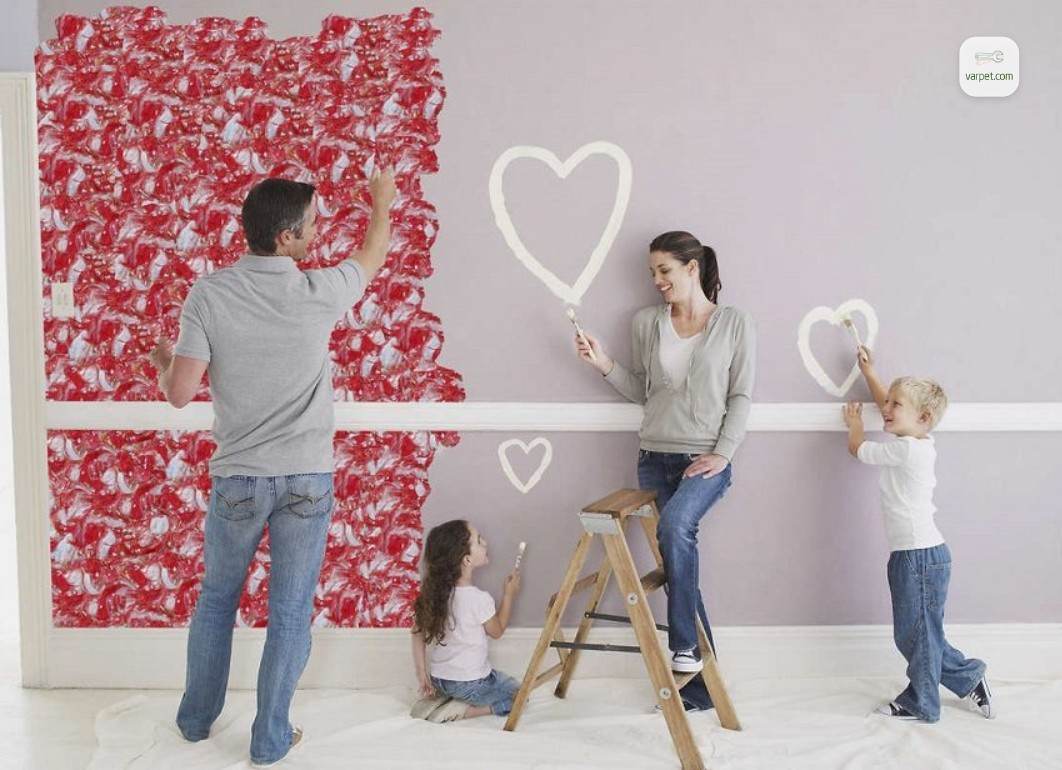
Putting liquid wallpaper on the walls is very simple
Frequently asked questions regarding application:
- Can liquid wallpaper be applied to paint? If there are no blisters and peeling elements on the painted surface, the surface must first be primed using a deep penetration primer. After a day, you can apply directly liquid wallpaper.
- Is it possible to glue wallpaper on liquid wallpaper? First, liquid wallpaper must be removed from the wall. This is not difficult to do: just soak them with water and remove with a tool. If the surface before applying the liquid wallpaper was well prepared, then it will be enough to apply several layers of primer. If the wall was not sufficiently aligned, then all the necessary preparatory work should be done before gluing the roll wallpaper.
Important! It should be borne in mind that the color of the walls under the wallpaper should be uniform, preferably white, or in the same color scheme with wallpaper. Otherwise, after drying, the darker areas will be visible.
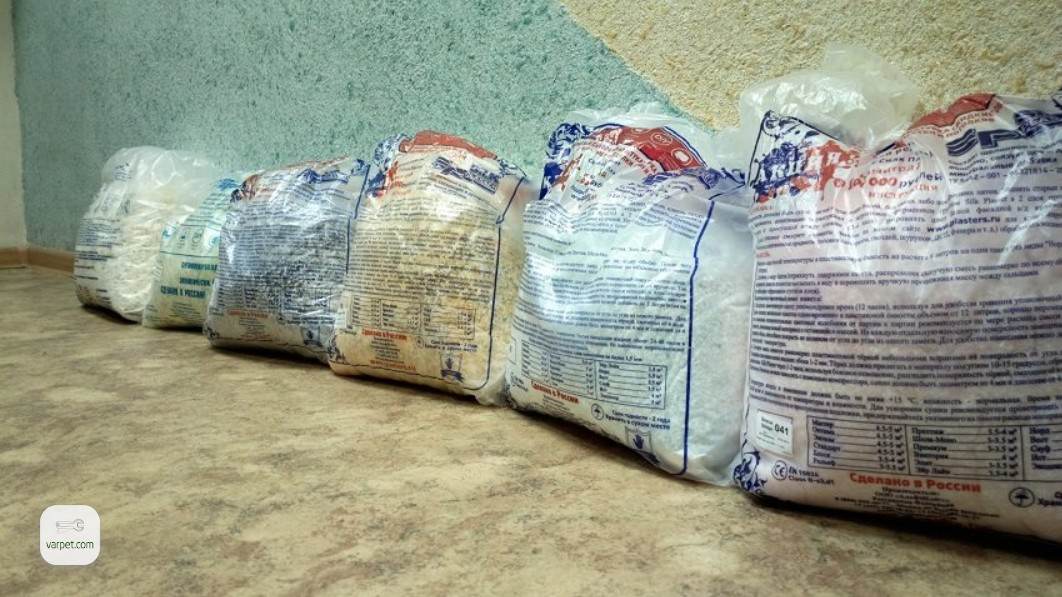
Dry mix for liquid wallpaper
In one container, only one bag should be kneaded at a time. Soaking part of the package is not permissible. It is necessary to immediately prepare such an amount of solution that will cover the wall from corner to corner so that there is no difference in the transitions. The resulting solution should be infused for several hours. Stir thoroughly before use.
If the composition involves the presence of decorative elements (shine, granules, etc.), they are first poured into water, and only then the base is added. Liquid wallpaper with a picture (photos can be viewed on the Internet), as well as with decorative fillers look especially interesting. If the components appear to be large, they can be independently chopped and added in crushed form.
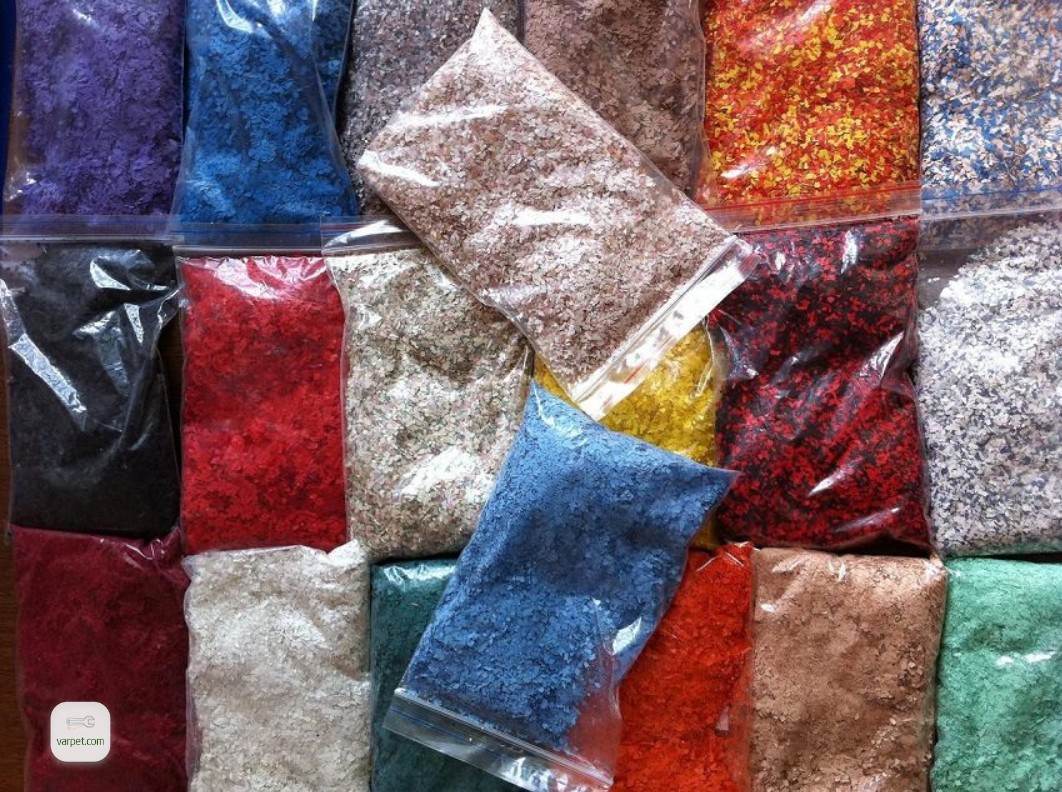
Decorative fillers for liquid wallpaper
Applying liquid wallpaper is a simple process. The main thing is accuracy, attentiveness and desire. People with a creative touch will especially enjoy the process, as these wallpapers allow you to create various decorative ornaments and applications.
Necessary tools for application: putty knife, grater, roller with a textured relief (if a relief coating is supposed), a special gun.
Plus temperature (not lower than 10 degrees) in the room is a prerequisite for applying liquid wallpaper.
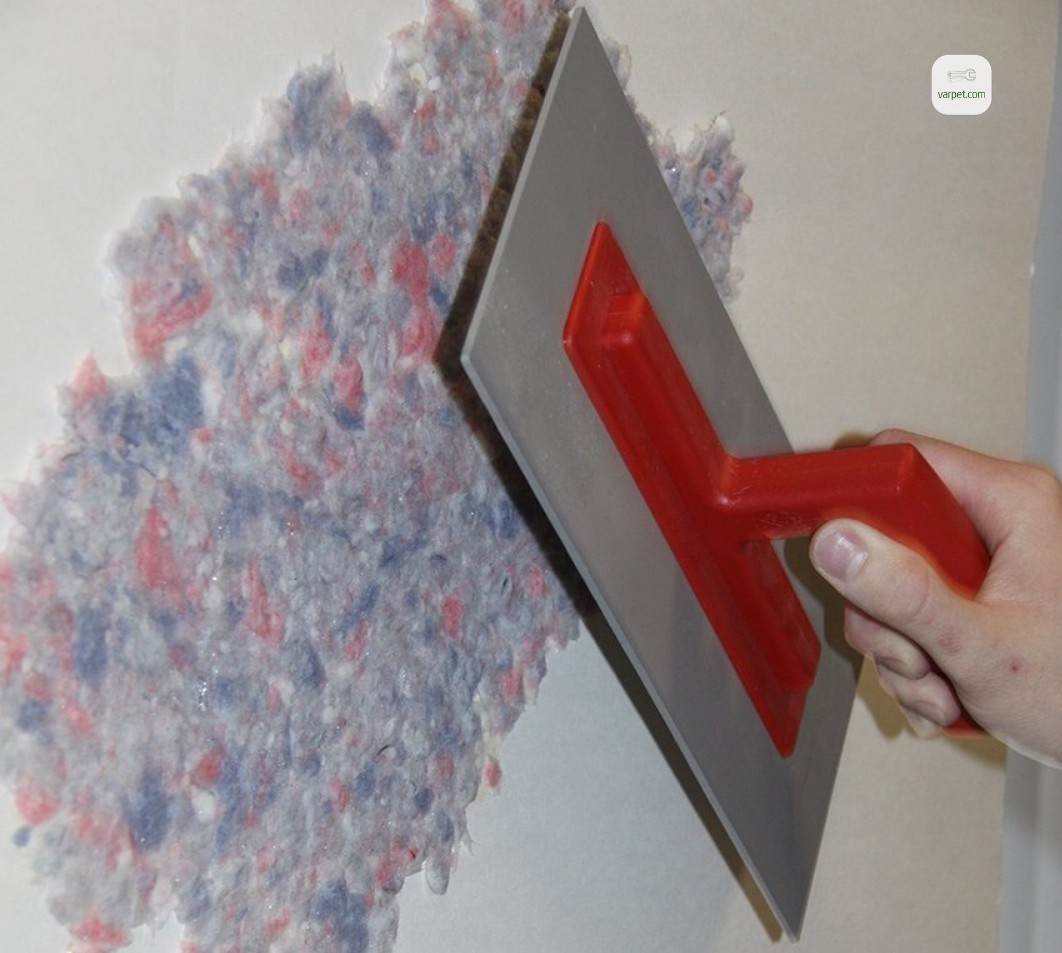
Drawing liquid wall-paper on a wall
A detailed description of how to apply liquid wallpaper on the walls (video material can be further studied) will make it possible to easily cope with the process.
How to apply liquid wallpaper on the wall? You need to take a small portion of the wallpaper with your hands or with a spatula, distribute it on the prepared surface. The whole process is no more complicated than applying ordinary plaster. For grinding, special graters are often used (they are slightly narrowed and made of transparent material). The required layer thickness is 2-3 mm, although for different types of wallpaper it may vary. And if it’s hard for you or you suspect that you can do something wrong and ruin the appearance of your home, you can easily entrust the work to an experienced craftsman by simply downloading the Varpet application and ordering the service here.
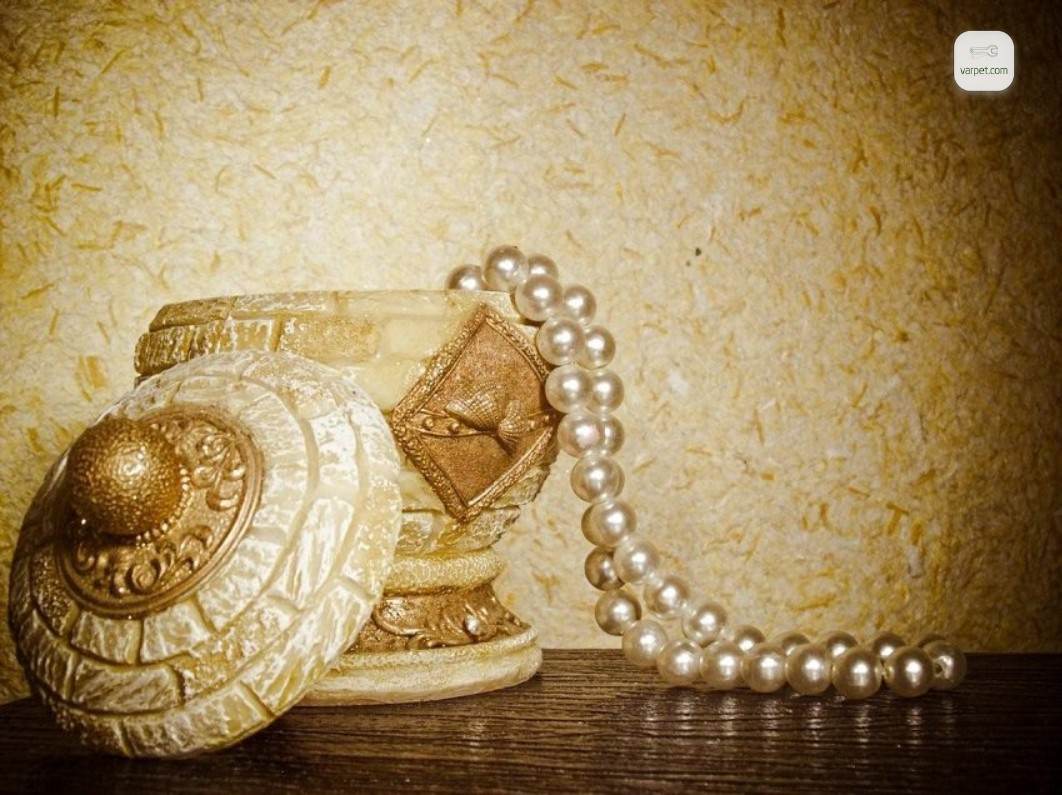
Pressing the tool hard is not worth it, but it is recommended to keep the grater at a small angle (5-15 degrees) with respect to the wall. This will create an even layer of the desired thickness. It is necessary to level out movements in different directions, but you can combine the direction of movement of the spatula, if this provides for the design. The principle of applying in the corners will help to understand the video: how to glue liquid wallpaper.
The next portion of the solution is added to the already existing on the wall, carefully leveling. The main thing is that the result is a homogeneous seamless surface, so you should pay special attention to joints and borders.
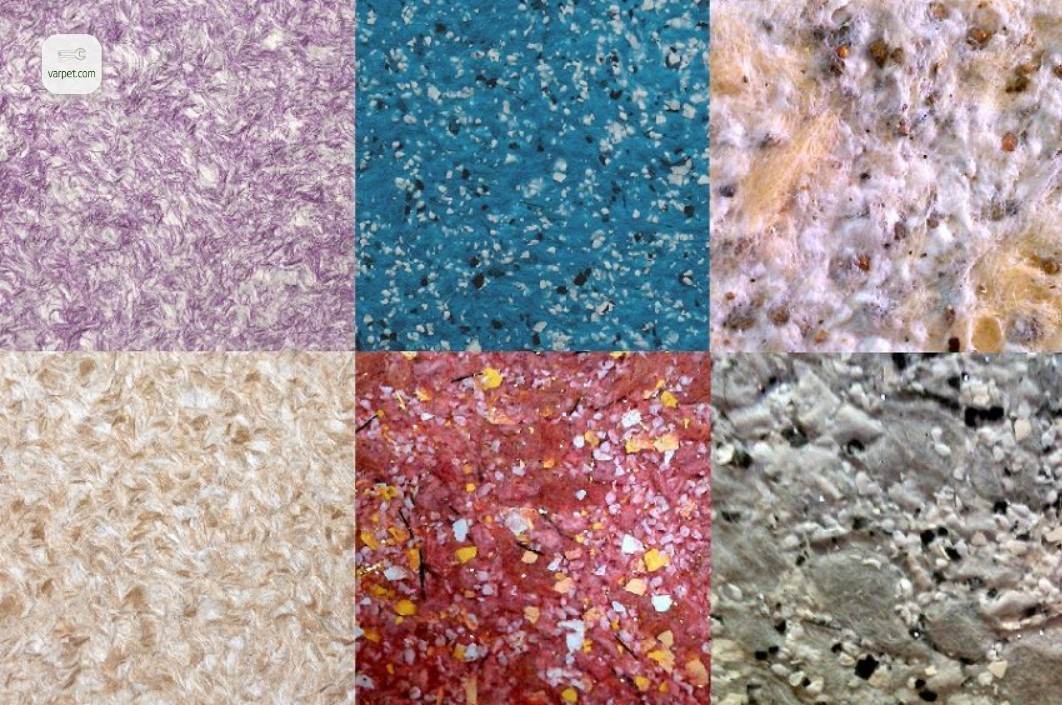
Liquid wallpaper of various textures and shades
If any area turned out to be with a clear defect, it can be removed by soaking in water.
The final step will be to level the entire surface with a grater dipped in water.
They will help you to make sure how simple the whole process of applying liquid wallpaper, video and photo materials that can be found on the network.
Actual consumption of liquid wallpaper may differ from the one stated by the manufacturer. Usually it is a little higher. If the package shows the calculation: 1 package per 4-6 square meters, the total amount of material should be taken from the calculation – a package of 3-4 square meters.
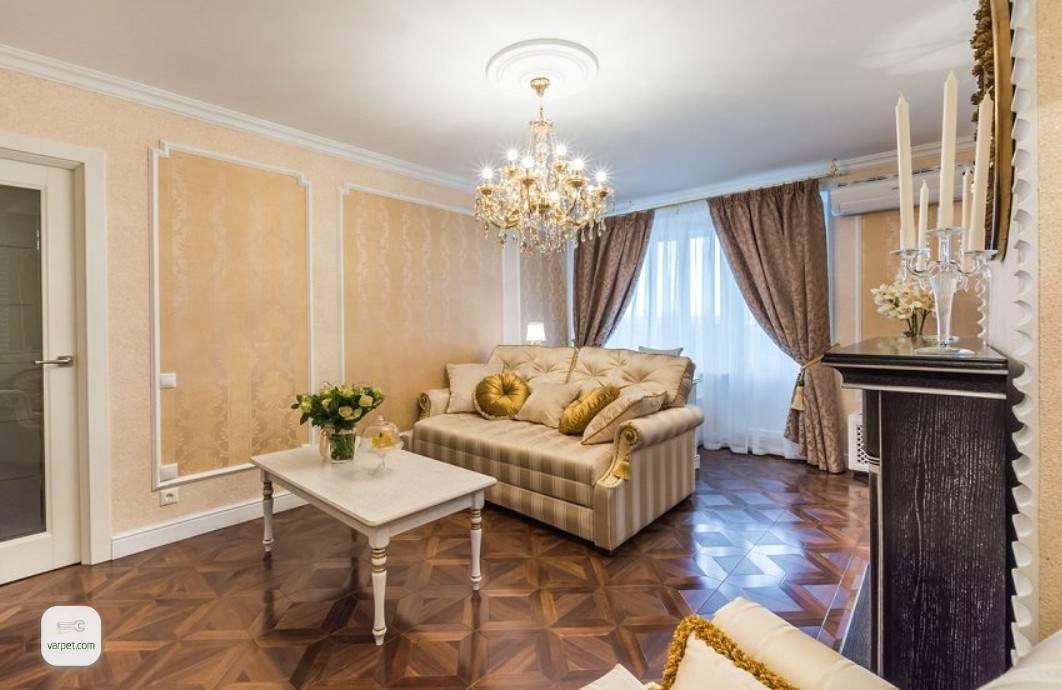
Decoration panels in the interior using liquid wallpaper
Drawings on the wall with liquid wallpaper
Designers are very fond of this wallpaper, because with their help you can create incredible patterns and drawings, thereby making any interior unique and original. On the network you can find numerous photos of liquid wallpaper with a picture in the interior.
But to make your home unique, it is not necessary to receive the profession of designer. Having studied in detail how to apply liquid wallpaper at home, you can easily make a unique ornament that will delight you with the fact that it is made independently.
First, the drawing is done with a pencil or marker, you can use special stencils.
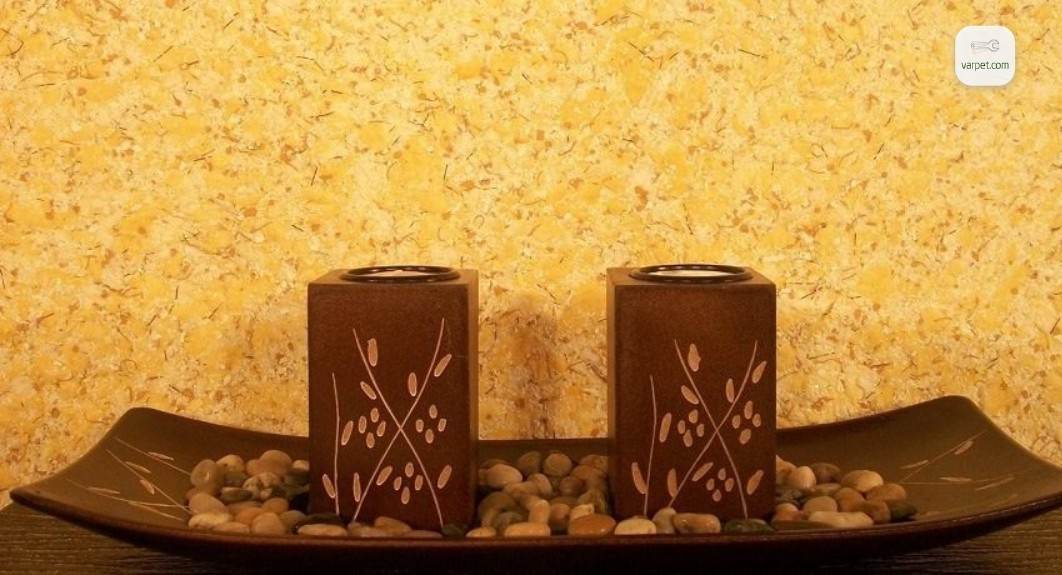
Liquid wallpaper is essentially the same stucco for walls with decorative fillers
The material is applied in very small batches. It is important to observe the color sequence (first, all areas are filled with one color, then another, etc.). You can not apply areas of different colors right up to the butt, you must wait until it dries completely and only then fill the gaps. The contour can be drawn with a marker or felt-tip pen after the entire canvas has dried.
The process of creating an ornament on the walls is a painstaking work that requires a lot of patience, time and effort. However, the result is worth it. You can see various photos of drawings on the walls with liquid wallpaper and choose something for yourself. And you can turn on imagination and create a real author’s masterpiece. You can also access the services of an accomplished wizard who can be invited using the Varpet app (click here to download).
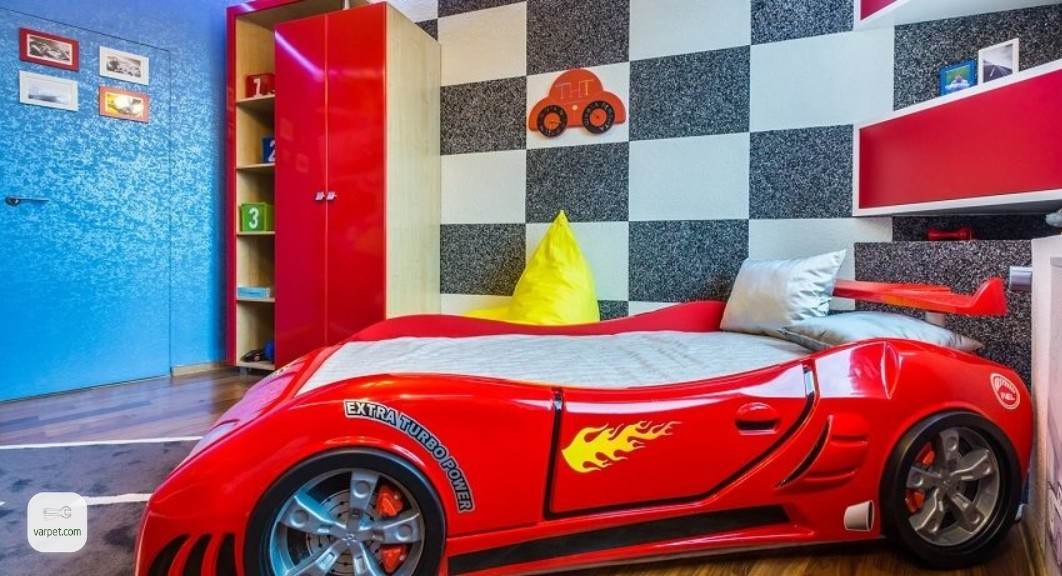
Liquid wallpaper is ideal for decorating a children’s room
Is it possible to apply liquid wallpaper on the ceiling
This type of wallpaper is a universal material that is also suitable for decorative decoration of the ceiling.
How to apply liquid wallpaper on the ceiling is one of the frequently asked questions. The application technology is the same as on the walls. The material is applied to the ceiling surface and leveled with a tool.
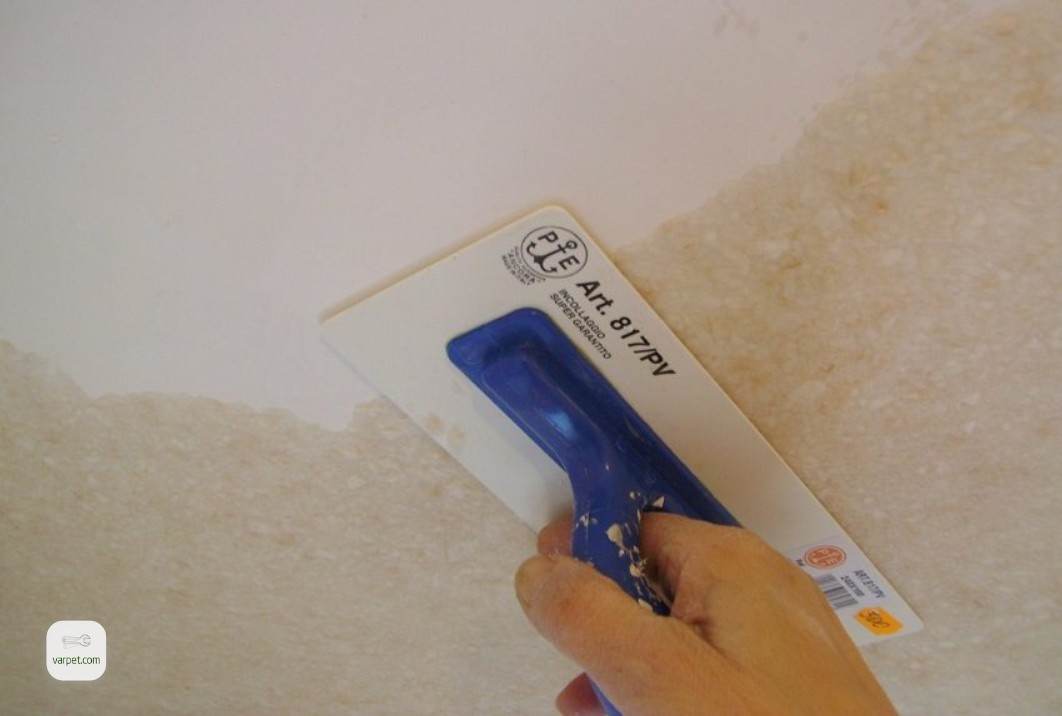
Application of liquid wallpaper on the ceiling using a special grater
For decorating the ceiling, it is more convenient to use another way of applying liquid wallpaper – spraying with a spray gun. The main feature – it is necessary to apply in several layers. The first layer is -1-1.5 mm, and then the main, the desired thickness.
In rooms where the humidity level is increased, for example, in the kitchen or bathroom, an additional coating with a layer of acrylic varnish is necessary. This will add moisture resistance to the surface. But this should be done after the wallpaper has dried.
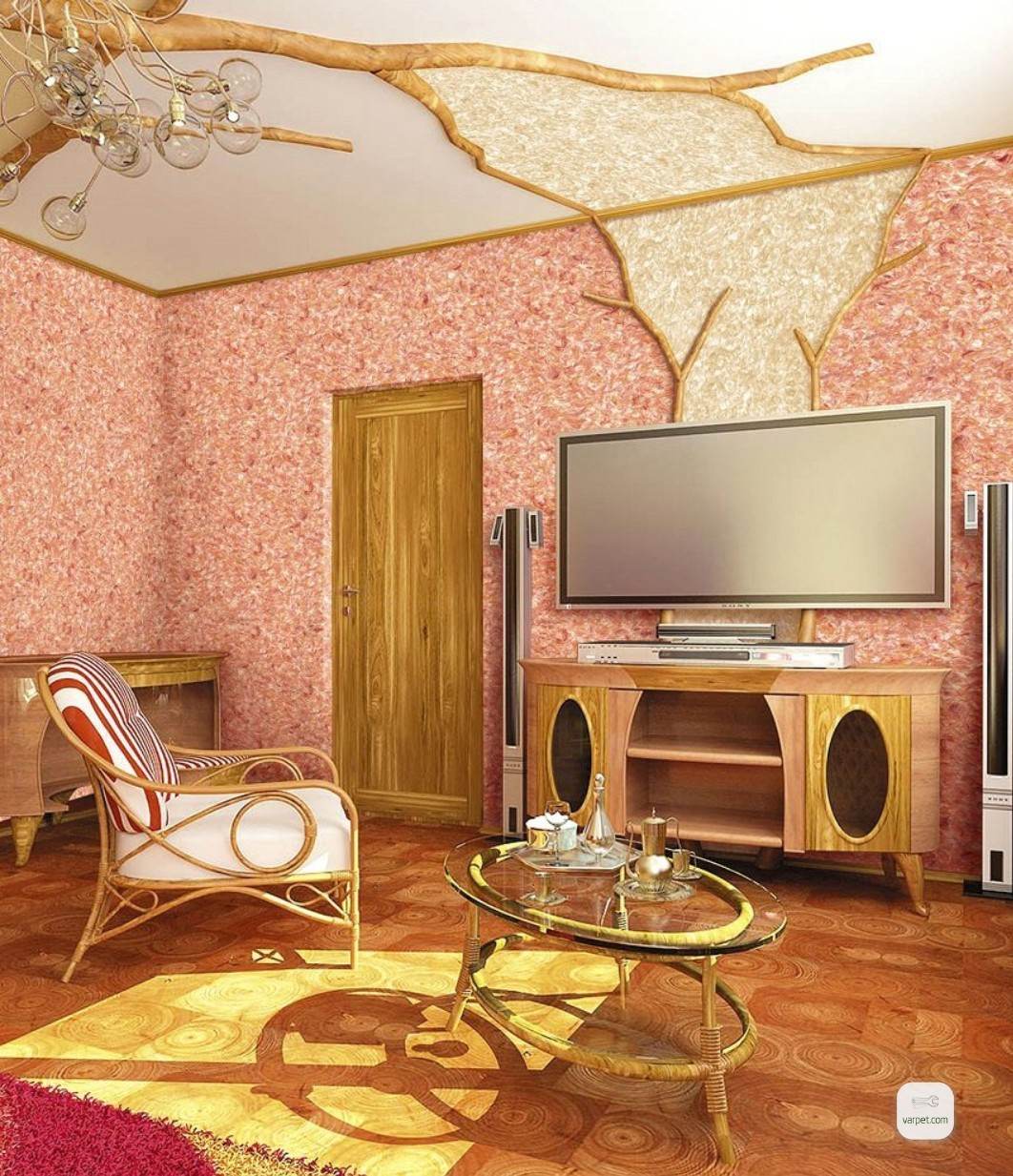
Liquid wallpaper can be used to decorate the walls and ceiling
Another difference from roll wallpaper is that liquid is not afraid of a draft. The room can be ventilated immediately and even better if the wallpaper dries in a natural way.
They will get their final appearance in about 12 hours.
Making a drawing or highlighting a zone is as simple as applying liquid wallpaper to the ceiling (a video lesson is a clear confirmation of this).
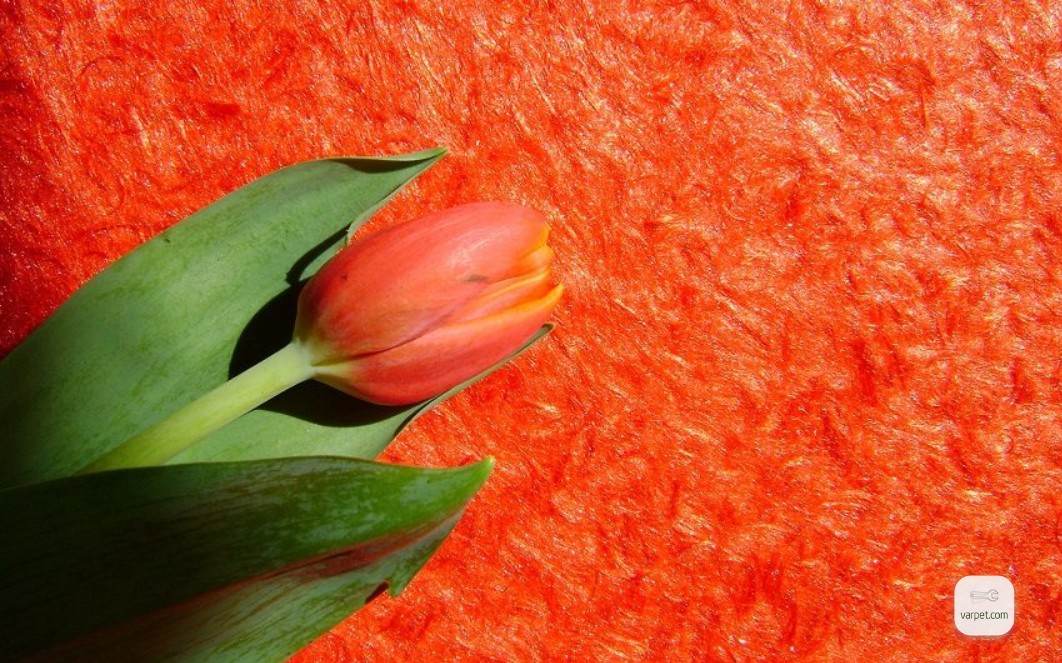
Liquid wallpaper saturated red
Despite the abundance of materials on the guidance of applying liquid wallpaper, many more questions arise in the process of direct finishing. You can additionally draw information from the video “How to glue liquid wallpaper on the wall.”
The main thing when decorating a room is to follow all the recommended instructions and technologies, maintain the right proportions, add to this a creative mood and a desire to make your home cozy and unique.

